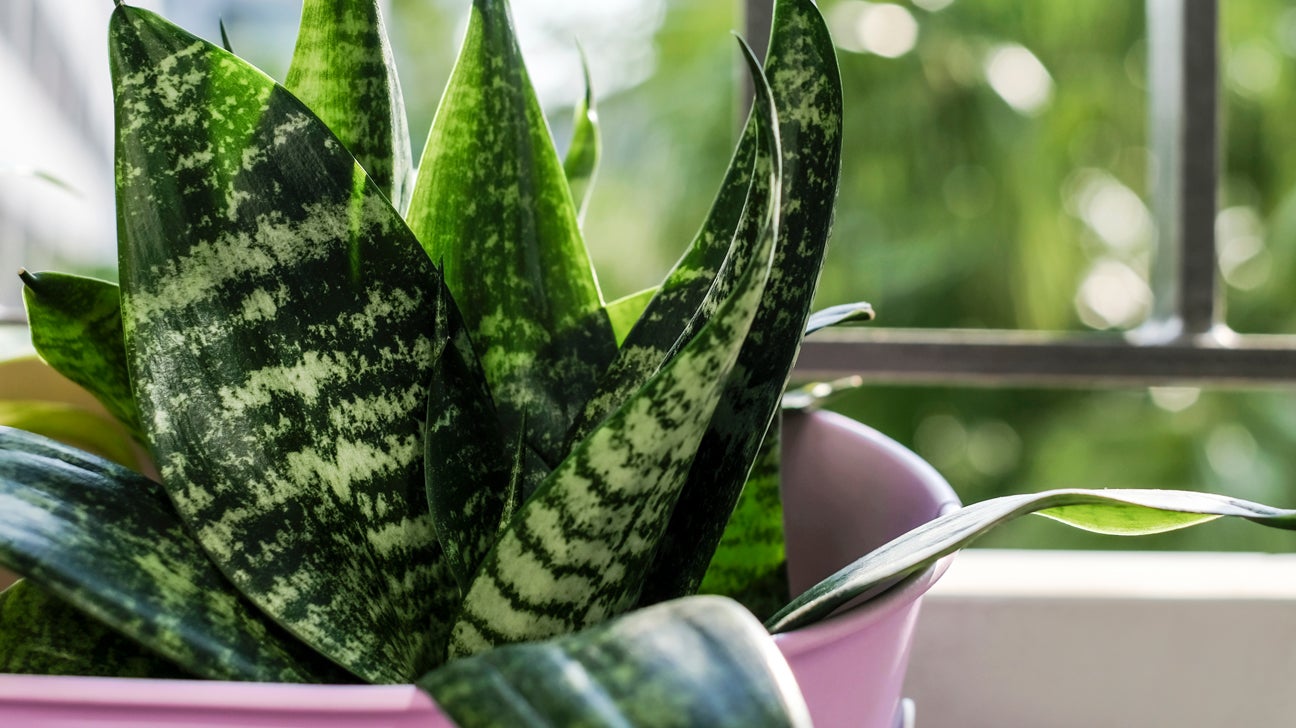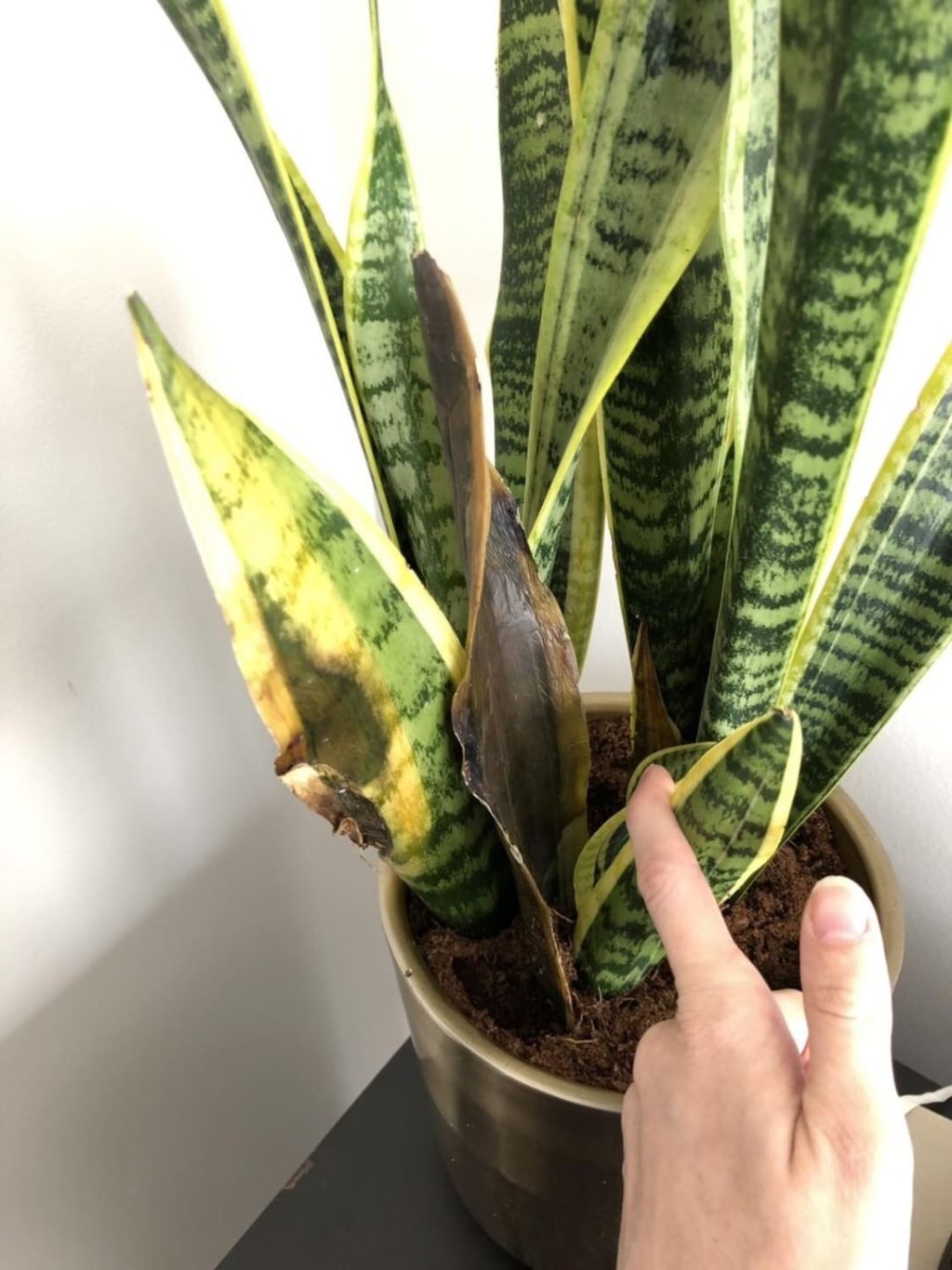The 10-Minute Rule for Snake Plant Leaves Turning Yellow
Some Known Details About Snake Plant Leaves Turning Yellow
Table of ContentsSnake Plant Leaves Turning Yellow Things To Know Before You Get ThisExcitement About Snake Plant Leaves Turning YellowThe smart Trick of Snake Plant Leaves Turning Yellow That Nobody is Talking AboutThe 7-Minute Rule for Snake Plant Leaves Turning YellowThe smart Trick of Snake Plant Leaves Turning Yellow That Nobody is Talking AboutAll about Snake Plant Leaves Turning Yellow
If you intend to have a snake plant in your house, right here are a couple of things to remember: Excessive water is this plant's weakness. Area a snake plant in a well-drained pot to avoid overwatering, as it can trigger rotting. Just water the soil when it's completely dry.If completely shaded, the plant can plain and the fallen leaves might become a bit saggy. Snake plants are not just simple to take care of but easy to increase. Simply comply with these directions: Cut off a healthy and balanced fallen leave near its base and make a bottom-side-up V cut at the bottom. Then, place the fallen leave in a tidy jar of water.
When roots have actually begun to develop (3 to 5 weeks), you can keep in water or transfer to dirt. Area a serpent plant in a well-drained pot to prevent overwatering, as it can trigger decomposing. Be sure the pot has an opening to permit draining. Snake plants are shown to be as useful as they are visually appealing.
Brush dirt from the root framework or rhizome. Use the blade to split the plant right into areas, maintaining the favor each section intact. Replant areas right into tidy pots loaded with the potting soil. Water and location in a partly bright place. Descendants or dogs are baby plants arising from the soil.
The Buzz on Snake Plant Leaves Turning Yellow
Utilize a sterilized reducing tool to get rid of a long, healthy fallen leave at its base (Snake Plant Leaves Turning Yellow). Submerge the cut end of the fallen leave in a clean container of water and set the jar in a partly bright location. Or allow the cut end to callous over for 24-hour and after that pot it cut-end down
Night-blooming blossoms are great smelling and similar in appearance to lilies. Make certain to select a cultivar that grows, since not all serpent plant selections will blossom. The Spruce/ Alonda Baird The Spruce/ Alonda Baird The Spruce/ Candace Madonna Snake plants grow finest with eight to 10 hours of indirect sunshine or a few hours of early-morning straight sunlight.
During wintertime, inspect the plant's soil mix every 2 weeks or sothe plant may need to be sprinkled just once a month. If you see its leaves are brittle and completely dry, water right away. Throughout springtime and summertime when the plant is in energetic development, sprinkling every 2 weeks or two is normally adequate.
To manage elevation, eliminate the tallest leaves at the soil line with a sterile cutting tool. Damaged leaves can be gotten rid of at any moment, nonetheless, wintertime trimming can trigger tension. Repot your serpent plant every 3 to 5 years, or when you see roots growing out of the openings in the base of the pot.
Snake Plant Leaves Turning Yellow Fundamentals Explained
The most effective time to repot remains in spring. When repotting a serpent plant, position it at the same level as it remained in the original pot. Serpent plants do not endure temperature levels less than 50F. If you are growing the plant outdoors, bring it indoors and maintain it in a cozy area where it's safeguarded from cool drafts.
Most can be eliminated by hand or with a mild spray of water. Serpent plants are one of the simplest plants to maintain and can last for several years.
Possessing a serpent plant has several benefits (Snake Plant Leaves Turning Yellow). It's an easy and functional method to start visit this site right here earning your eco-friendly thumb. Right here are a few of the very best elements of owning a snake plant. Easy to care for and a terrific very first plant for beginning gardeners, Distinct shape adds elevation and rate of interest to houseplant collections, Adapts to different light conditions and tolerates low-light environments, Plant is forgiving and practically unbreakable, Compact growth habit fits well in small spaces, Dry spell immune FAQ Snake plant made its name due to the method its long, slim leaves with distinctive red stripes and other markings look like some kinds of serpent.

Getting My Snake Plant Leaves Turning Yellow To Work
Snake plants are easy-care houseplants. This tutorial on repotting Serpent Plants reveals you the steps to take, the mix to utilize, and when you should repot your serpent plant.
Their spiky, patterned foliage is so fascinating to me. And also, you can disregard them the majority of the time, and they enjoy as can be! I really repotted 5 of my plants yet you just see 2 of them below. I call this job the "Snake Plant switcheroo" due to the fact that I switched out containers and places they remained in.
That's why I add view it in the succulent Recommended Site and cactus mix since it's beefy and well aerated (Snake Plant Leaves Turning Yellow). I also toss in a couple of handfuls of natural compost as I'm planting (I go a lot lighter on both this and the worm garden compost when repotting houseplants as contrasted to container plants in my yard) and a 1/2 layer topping of the worm garden compost
Both are complete of high-quality ingredients. Make certain whatever potting dirt you make use of says it formulated for interior plants on the bag. I utilize Container's neighborhood garden compost.
Not known Details About Snake Plant Leaves Turning Yellow
Earth's a shot if you can not discover anywhere you live. Both improve the dirt naturally. Worm garden compost is my favored modification, yet I utilize it sparingly due to the fact that it's abundant. You can discover more regarding why I use worm compost here. The top 4 are what I used for my mix.

If your own is in a 6 expand pot, then an 8 pot would certainly be the dimension you 'd want to make use of. Due to the fact that Sansevierias like to spread out as they expand, I have actually discovered that they don't require a deep pot. A deep pot has more dirt mass near the bottom which might remain as well wet which brings about root rot.
Loosen the plants from their pots. For one plant I used a plain knife and for the other, I gently pressed on the grow pot.
Not known Incorrect Statements About Snake Plant Leaves Turning Yellow
Once the plant runs out the pot, measure just how much dirt mix you'll require to increase the top of the origin ball up to 1/2 to 1 below the top of the brand-new pot. Include the mix in. Place the plant in the pot and fill in around the sides with mix.